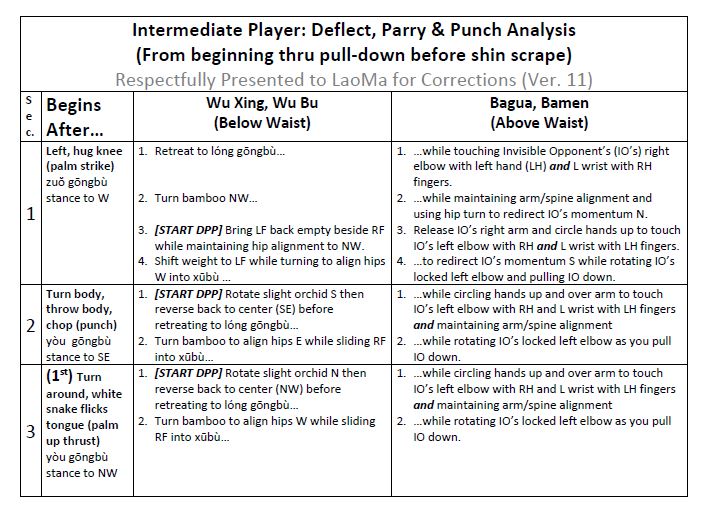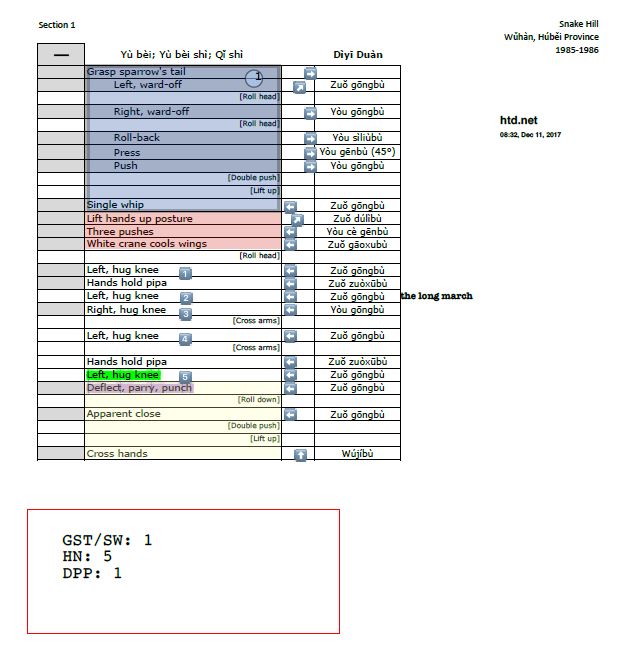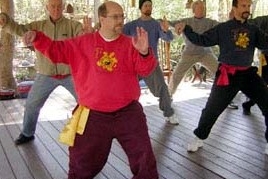Taking it apart to put it back together again
/(In order to see how it really works)
This would be my first time in writing for the student corner but I very much wanted to report my experience interacting with the abbreviated form composed of only three postures and the transitions among them. Dubbed the “Roller Coaster” form (it perhaps deserves a more elegant name?) is made from combining only the Grasp Sparrows Tail/Single Whip, Deflect, Parry and Punch, and Hug the Knee postures.
I had ‘learned’ the Wudang Mountain 108 form by progressing through the series of 152 postures at a measured pace. It took me more or less two years to work through all six sections and reach the point where I could complete the Form without following anyone. It was a work of memory and attention just to be able to finish the Form without finding myself lost for moments. That was a challenge and still LaoMa said -more than once! – “Now you know the choreography and you can begin to learn the Form.” I took that to mean I would need to develop some mastery of the individual postures and in that way continue to learn the Form. The Form, by definition, is a series of postures ordered not in an arbitrary manner, but in a securely fixed and intentional sequence.
I’ve always admired how exceptional teachers are able to help students by continuously changing and constantly adapting their methods, viewing the subject from different angles, repeating many times what needs to be repeated, often surprising the students in various ways to awaken them.
Observing the capabilities and progress of each student, great teachers don’t teach out of books. I’ve watched LaoMa for many years now as he teaches with persistence, imagination and saintly patience. How many times might he have asked: “What posture is done only in the first section and never repeats? “, or “How many hug the knees in the whole form?” Responses range from blank stares, lucky guesses and, sometimes, a correct answer. The teacher-a telephone ringing in an empty room.
What does it take to awaken a senior student who himself recognizes he has become a little bored with the Form, just interested enough to show up regularly and maybe practice once in a while? Is a breakthrough even possible for her?
I write this because I feel I’ve made a genuine breakthrough in my practice after years of stasis and often regression. And I came to this through our recent work with the Roller Coaster Form.
So how did this happen for me? The development seemed to begin innocently enough with a detail review and corrections of a single posture DPP, while also noting where it was repeated in the Form. This exercise seemed to lead quite naturally, although unexpectedly, to the creation of the Roller Coaster. That experience of developing the abbreviated form (which is really not at all abbreviated as the missing parts are just not physically expressed) led me to a personal breakthrough. For the first time I began to see/feel/understand the Form not just as a memorized sequence of postures but as “The Form”, a whole greater than its parts-the gestalt. It’s difficult for me to describe this insight except to say I began to perceive the Form as a sort of landscape rather than a linear chain of postures.
I’ve begun to practice daily for the first time in many years. And enjoying all the benefits of frequent practice. It’s hard to identify what it was in my experience with Roller Coaster that so captured my renewed attention. It could have been the very process of disassembly and reconstruction through which I began to see how the Form “works”. I needed to think about the Form as a whole as we worked together on Thursday mornings in the development of the Roller Coaster. That attention was sustained as we then aimed to restore the entire Form to its original whole.
I write this filled with appreciation and gratitude to LaoMa for his extraordinary ability to wake up an oversleeping student.
By Woody Lomas, 7/2018










